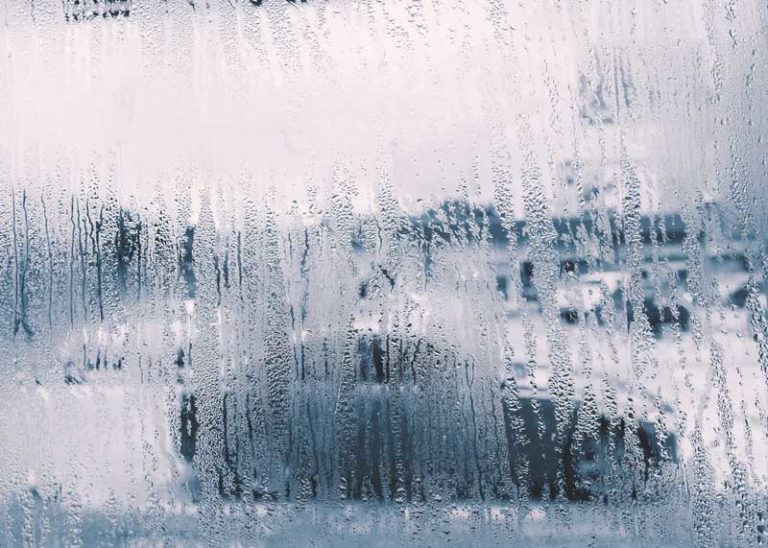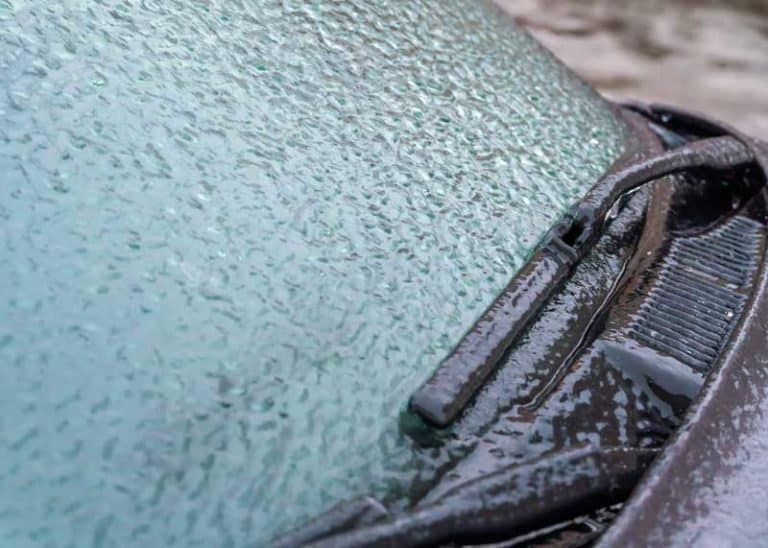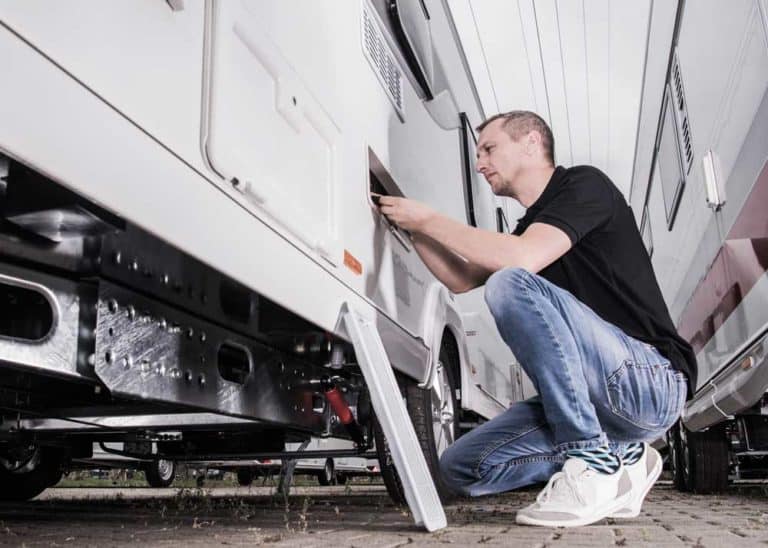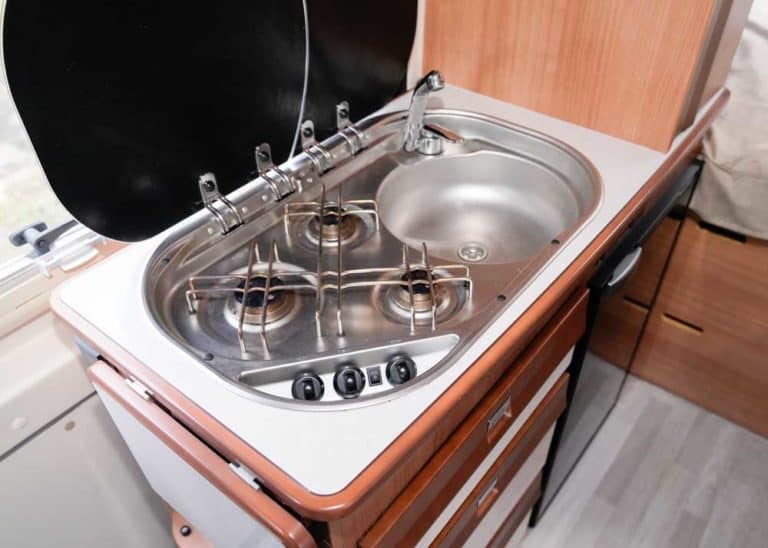How to Refill a Freshwater Tank During Camping (5 Sources)
When you’re camping, one of the last things you’ll want to run out of is freshwater. You’ll need it for drinking, cooking, and bathing. If you’re camping in an RV, you’ll also have a freshwater tank on board. But what do you do if you need to refill them?
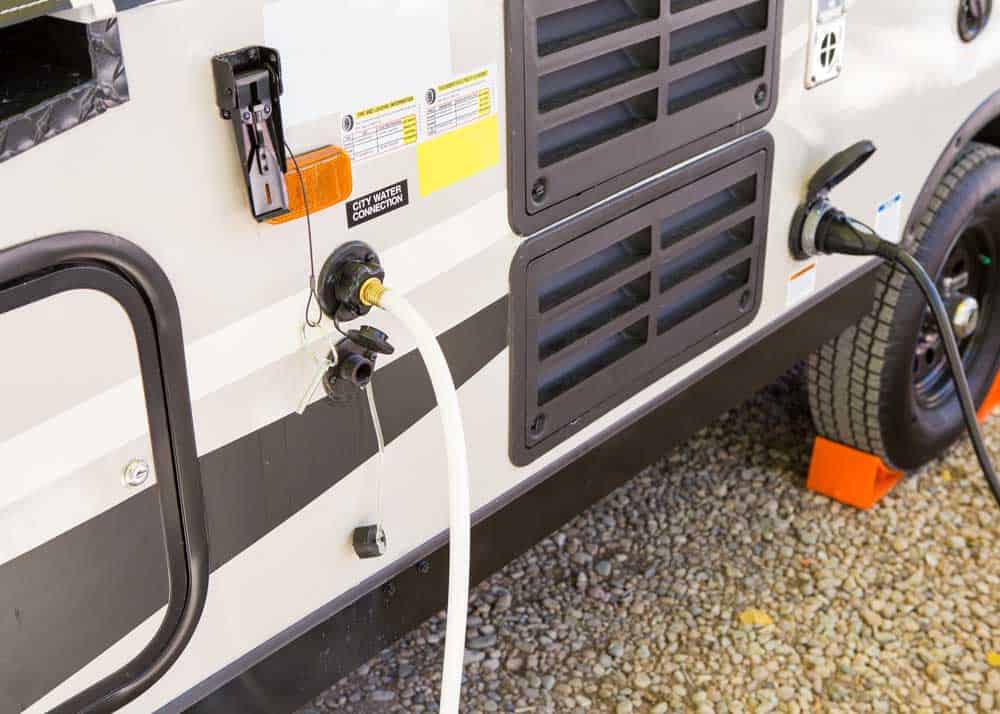
Whether you’re camping in a tent or you’re traveling in an RV, knowing how to get fresh water is absolutely essential to having a fun adventure.
You’ll need it for showering, cooking, washing dishes, drinking, and conducting other personal hygiene, so you’ll need it in large supply as well.
Keep reading for the things you should consider when figuring out where to refill your tank.
How to Refill a Freshwater Tank During Camping
If you’re traveling with a large-capacity freshwater tank, whether as an integrated component of your recreational vehicle or just a tank in the back of your vehicle, you have to have a plan to refill it.
Typical freshwater tanks, depending on the size of your RV, will carry anywhere from 20-100 gallons of freshwater on board.
A good rule of thumb for estimating how much water you’ll need is to figure 2-4 gallons per person per day. This will cover drinking, washing, and cooking needs.
Depending on how many people you’re traveling with will determine how long your tank will last. Of course, it’s important to be more conservatory with water while you’re out camping since it’s in short supply.
There are five main ways to fill a freshwater tank while you’re out camping. These methods don’t include refilling it out of a freshwater lake or stream because in many cases, this water won’t be safe to drink.
You can boil it for several minutes to kill any pathogens. Because of the risk involved, though, it’s not recommended unless there’s an emergency.
In general, you’ll be looking to any of five different places to refill your fresh water tank safely.
These places are:
- Freshwater hookups at a campground
- RV waste water dump station
- Highway travel center
- National Forest
- Bottled water
We’ll cover each of these different methods in turn throughout the rest of the article.
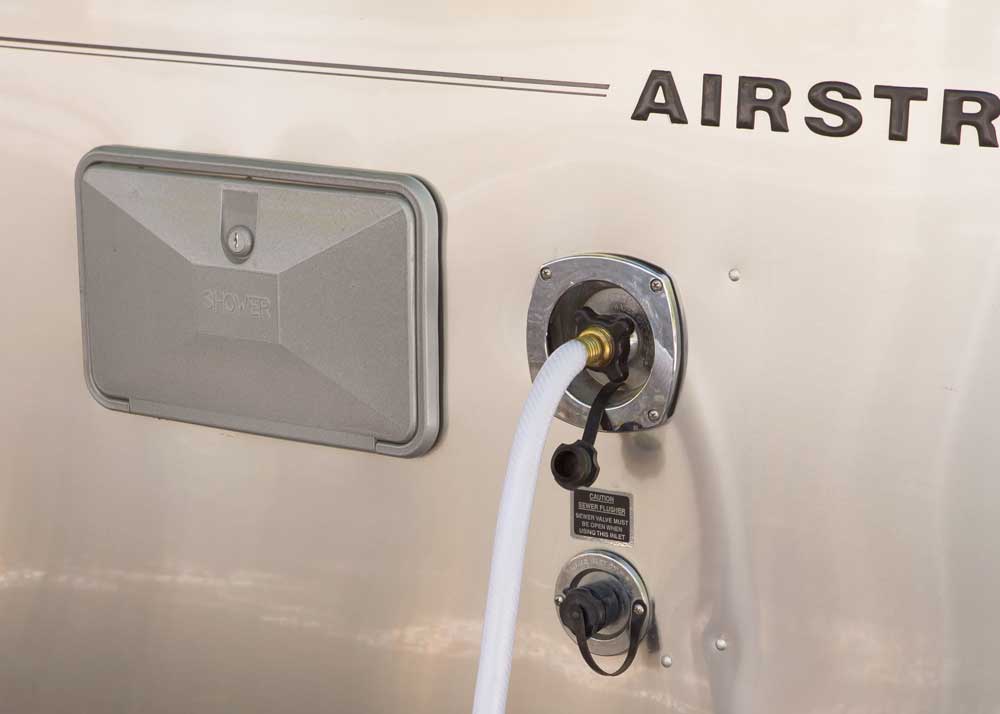
Keeping Your Water Safe to Drink
Before filling your freshwater tank, whether on board your RV or as a standalone tank in a vehicle, you’ll want to make sure you sanitize it in accordance with the system’s instruction manual.
Generally, this means you should be sanitizing your system every six to eight months, whether you use it or not. This keeps it from growing harmful bacteria in the system.
Sanitizing your freshwater RV tank isn’t too difficult, but it’s one of those RV maintenance tasks you just can’t shirk to make sure your freshwater is staying safe to drink.
Here’s a good guide on how to sanitize your RV tank properly to enjoy freshwater throughout your next adventure!
It’s also important to use the right hoses when you’re filling or refilling your water tank. Freshwater drinking hoses are typically white in color.
You’ll also want to use a water filter attached to the end of the hose to make sure you’re getting the cleanest water you possibly can.
More reading: How long to boil drinking water?
5 Freshwater Sources for RVs
1. Campground Freshwater Hookups
If you’re camping at a campground, odds are that you’ll have access to freshwater through one of their community hookup locations.
This might be as simple as a hand pump for water sticking out of the ground at certain spots around the RV park, or there could be hookups right at each RV parking spot.
Of course, campgrounds that offer full hookups will likely be more expensive per night to stay than places that don’t offer all the creature comforts.
This type of RVing is called boondocking and it basically means roughing it without electricity or water. The campground has to pay for the water somehow!
2. RV Dump Stations
Your next option for filling up your freshwater tank is at an RV dump station. This is a designated spot where you can dump all the waste and sewage stored in your RV safely and legally.
These sites are spread all around the country and are utilized by boondockers who aren’t paying for overnight campground access.
While you’re dumping your sewage, you can sometimes also find freshwater hookups to refill your water. You’ll probably have to pay for your water at these locations, although some may offer it for free.
There are plenty of crowdsourced guides for how to find these dumpsites all over the internet. Potable water spigots are generally colored blue or green, while non-potable ones are colored red.
Unfortunately, many locales are removing their dump stations due to abuse by RVers who leave the sites filthy and dump things that shouldn’t be dumped.
Utilities are also getting more expensive, and many states or cities don’t want to accept the liability that comes with offering potable water. Luckily, capitalism is filling the void as travel centers across the country expand their RV offerings.
Keeping your fresh water tank full is important for flushing your toilet. Here’s how much water your RV toilet uses per flush.
3. Highway Travel Centers
As mentioned above, highway travel centers like Love’s or Pilot Flying J are stepping in to fill the need for RV service centers. Of course, this means you’ll be paying for those services in most cases.
Highway service centers can provide water hookups, dump stations, and a place to fill up your gas and take a shower if you need it.
One important thing to note when driving your RV is that traveling with a filled water tank will lead you to have higher costs in fuel, as a heavier RV uses more fuel.
If you’re boondocking in a place without hookups, this may be necessary but if you plan your trip to use a service center or dump station near to where you’re staying, you can fill your water tank at your destination.
4. National Forests
National parks and forests are the final places on this list where you can get access to fresh water for your tank.
>This is because many national forests have campgrounds that host RVs anyway, so they’ll have water fill stations on-site as well. Generally, these fill stations have no frills, and their faucets might not even have threads for your hose.
In that case, you’ll need a product like the Water Bandit which allows you to hook your hose up to a faucet without threads on it.
This is probably a good product to have on hand anyway since it will also allow you to connect your hose to faucets with stripped threads (a likely scenario when people are constantly using freshwater hookups).
Remember to plan ahead and confirm that the national forest you’ll be visiting actually has freshwater hookups that work. If you’re not going to be staying at the campground, you may be required to pay for the ability to get fresh water as well.
Planning ahead and confirming can save you a lot of headaches when you get there and find out that their faucet isn’t working.
5. Bottled Water
While not ideal, you can also fill your water tank with bottled water. There are a number of places you can refill your bottles, to refill your RV tank.
You can access bottled water from a store, a friend’s house, or public water source.
And in some parts of North America, you can access potable water from public springs. If you are unsure of the safety, be sure to confirm or purify before drinking.
If you are going to fill your tank with water in bottles, you might hit a bump when you want to actually pour it into your tank. The next section will help.
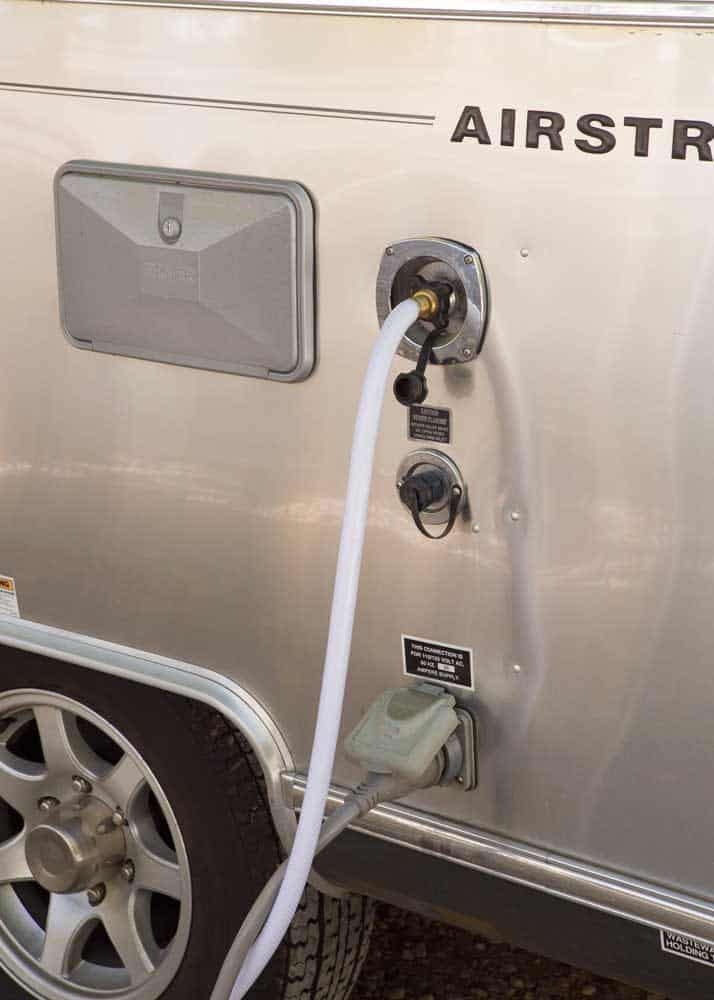
Learn more about RV water heater operation and how long to keep it running.
2 Ways to Fill RV Water Tank Without a Hose
This might sound like a silly question. Until the day that you’re standing beside your RV with water jugs. And realize that you need to have a pressurized fitting to add water to the tank.
If your trailer has a gravity feed, then you probably don’t need this tip. But if the only connection you have is a pressure fill (with threaded hose connection) then this will help.
- Drill Pump: This simple pump is powered by your drill (cordless or corded) and will pump water from your water jug into your RV via your threaded hose connection. See this popular option on Amazon.
- Tank Vent: This vent allows air to leave the tank while being filled via the threaded connection. If the air can leave the tank this way, water can also enter. So just pop out the mesh vent and put in a plastic funnel. You can then fill your water tank by pouring water jugs into the funnel.
Both methods are explained in this video:
Here’s how to drain your fresh water tank before travel or sanitizing.
Your Turn
RVing or camping can be a lot of fun, but there’s no quicker way to ruin that fun than by running out of fresh water. In addition to conserving the water you have, you’ll have to be aware of how to refill your tank.
If you’re boondocking, you have several options for freshwater, but doing the research before your trip can save you headaches down the road when your cell is out of service and you have no idea where the fill station is.
Where do you refill your RV? Have a tip to share? Join me below!


